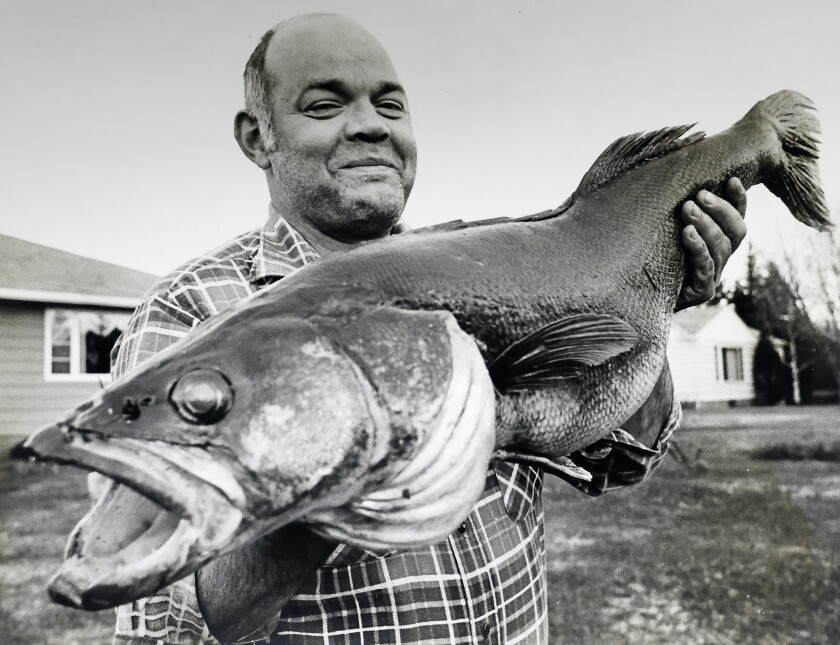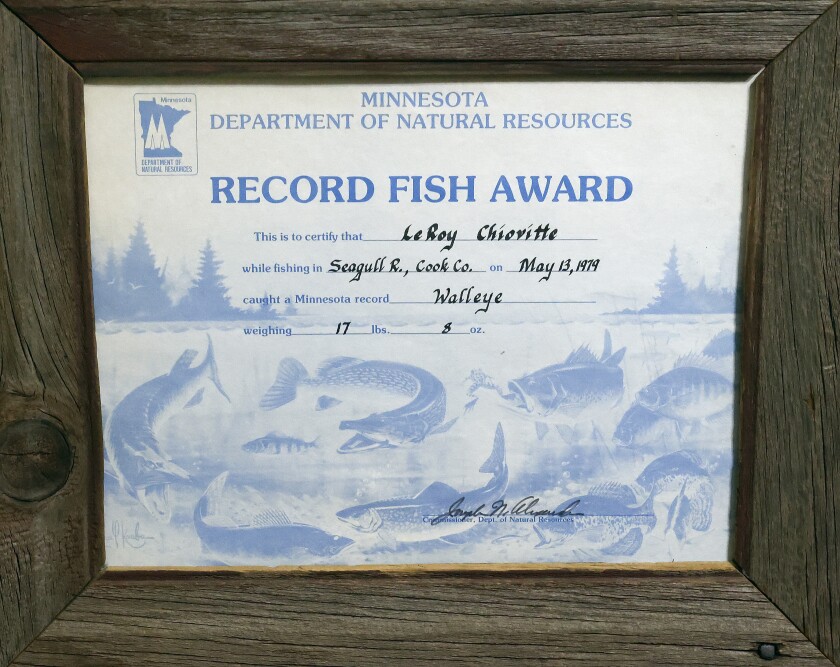If you haven’t heard about the Minnesota Department of Natural Resources’ plan to overhaul the state’s fishing record book, you aren’t alone.
The DNR has made little effort to publicize the plan: no press release and no media event by the commissioner. Heck, the annual reminder to get ice houses off melting lakes gets more DNR hoopla.
ADVERTISEMENT

Here’s what’s happening behind the scenes:
The Minnesota DNR’s Record Fish Program has been in place for nearly 100 years. The program recognizes two record categories: harvested (kept) fish based on weight and released fish based on length.
Sometime in 2022, the DNR unveiled a plan to add 18 new species to the state’s official list of “catch-and-release” big fish records. Joining muskie, flathead catfish, sturgeon and northern pike already on the list would be blue sucker, bowfin, channel catfish, freshwater drum, shovelnose sturgeon, tiger muskellunge, bigmouth buffalo, lake trout, largemouth bass, rainbow trout, smallmouth bass, smallmouth buffalo, brook trout, brown trout, longnose gar, sauger, shortnose gar and walleye.
The DNR plan is to phase in six new species annually over three years. The requirement that the fish be photographed, measured and witnessed before being released will remain in effect.
That’s the good part. The plan will encourage catch-and-release conservation of nearly all commonly-caught species in the state and allow more people to get their name, and favorite fish species, in the record books. If that's what they want.
But here’s where the DNR plan goes terribly astray. The agency also plans to set aside every “kept” fish record set prior to 1980, when the DNR began requiring record kept fish to be weighed on a DNR-certified scale. That’s 12 state fishing records, including walleye, northern pike, crappie, coho salmon, lake trout, smallmouth bass, yellow perch, bluegill, bullhead, channel catfish, carp and flathead catfish.
Starting March 1, 2024, the DNR would toss the records into a separate “state historical record” category for the 12 species that have been some of Minnesota’s most famous record fish, and then begin installing new "certified" kept-fish records in their place as the official state records.
ADVERTISEMENT
That part of the plan is pure hogwash.
It’s unclear how or why this idea came forward. Shannon Fisher, who is handling the proposal for the DNR, said the idea came not from the public or Legislature or DNR officials, but from a Minneapolis newspaper columnist.
The DNR plan casts aspersions on the credibility of the 12 anglers who caught those record fish, assuming that the old records are somehow lesser, inaccurate or falsified. (The agency is putting too much stock in the old saying: "All fishermen are liars except you and me, and I’m not so sure about you.")
The DNR's brief explanation, if you can find it, claims that old records are “potentially questionable" due to the lack of documentation in some cases.

But in some cases, there’s more than enough documentation.
Take LeRoy Chiovitte’s massive state record walleye. It was caught the second day of the 1979 walleye fishing season when the avid Hermantown angler, who died in 2019 at age 82, was fishing with Lorin and Todd Palmer, of Cloquet, on the Seagull River, which flows into Saganaga Lake near the end of the Gunflint Trail.
That was a cold spring and the walleyes were still spawning, meaning many big females were still heavy with eggs. And they were biting like crazy. The Chiovette group and others were catching lots of big walleyes. But none as big as the one LeRoy caught that Sunday.
ADVERTISEMENT
Chiovitte’s walleye was weighed on an accurate scale at End of the Trail Lodge with multiple witnesses who saw the scale hit 17 pounds, 10 ounces before stopping. But the DNR later found the scale was 2 ounces off perfect at that weight, so they revised the new record to 17 pounds, 8 ounces. Then they gave Chiovitte a certificate signed by the DNR commissioner. (The fish is now on display at the Chik-Wauk Museum at the end of the Gunflint Trail, not far from where it was caught.)

Yes, you can argue by today’s standards that the river should have been closed to fishing (as it is now) to protect the spawning fish, but it wasn’t. And you could argue that everyone fishing should have been releasing those big fish, but that wasn’t the norm back then.
But not "DNR certified?" Relegate the state’s most famous record fish to a lesser, "historical" category because it was caught a year too soon?
Give me a break.
Instead of throwing out all 12 historic records the DNR should instead put the burden of proof on the doubters. If someone can prove a record fish wasn’t really a record, come forward and make the case. Until then, the 12 old kept-fish records should continue to stand right along those that were set since 1980.
The DNR apparently has notified some fishing groups of the proposed changes, although it’s unclear which groups — and realize only a tiny fraction of Minnesota anglers belong to any organized group. Despite their lack of public outreach so far, the agency claims to want the public’s feedback on the proposal. So let’s give it to them.
Should the DNR expand the state’s catch-and-release record program and add 18 new species? Absolutely.
ADVERTISEMENT
Should the DNR relegate 12 of the state’s kept-fish records to a lesser “historic” category to make way for newly "certified" caught fish? Absolutely not. Minnesota doesn’t need two tiers of kept-fish records. Those old records don’t deserve an asterisk.
That’s my feedback. Send yours to Shannon Fisher at shannon.fisher@state.mn.us .
You can find out more about the DNR Record Fish Program (but not about the plan to change it) at .



























